Cows Don’t Do Retakes — Why ‘1923’ Uses 5 Cameras
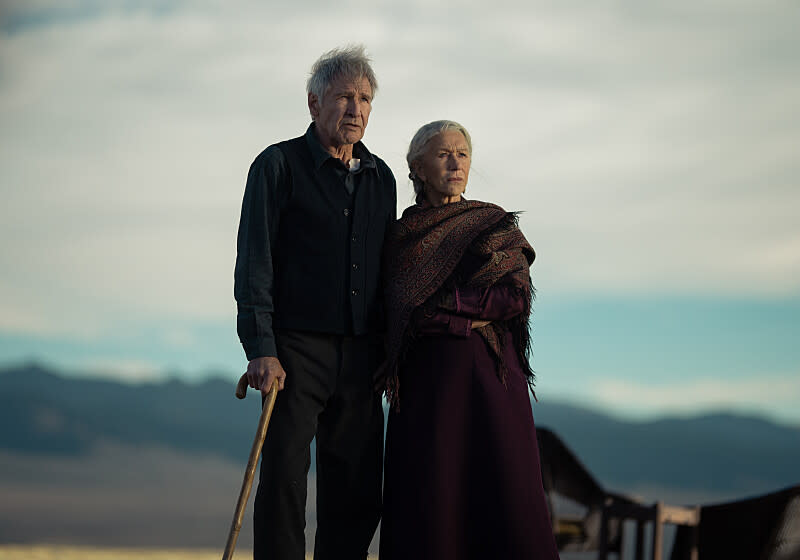
- Oops!Something went wrong.Please try again later.
Ask many cinematographers their thoughts on shooting with multiple cameras at once, and they’ll share the same complaint: The practice is efficient in terms of gathering footage but requires severe compromises in lighting. Yet one of the most visually gorgeous series on television this year was Season 1 of Taylor Sheridan‘s “1923” (streaming on Paramount+), a show that regularly utilizes not just two or three cameras but five.
An expansive Western prequel to Sheridan’s “Yellowstone” (and sequel to “1883“), “1923” has an epic scope that traverses multiple continents and storylines, all of which are rendered in beautiful backlight by cinematographers Ben Richardson (who also directed six of the first season’s eight episodes), Corrin Hodgson, and Robert McLachlan. The sweeping vistas and large-scale action sequences are matched by the carefully sculpted light on the faces of actors like Harrison Ford and Helen Mirren, who are photographed with the same care that Western filmmakers of the classical studio era took with John Wayne and Gary Cooper.
More from IndieWire
'Minx' NSFW Trailer Strips Down for the Once-Axed Series' Return on Starz - Watch
Fran Drescher Blasts Bob Iger's Strike Comments: 'I Would Lock Him Behind Doors'
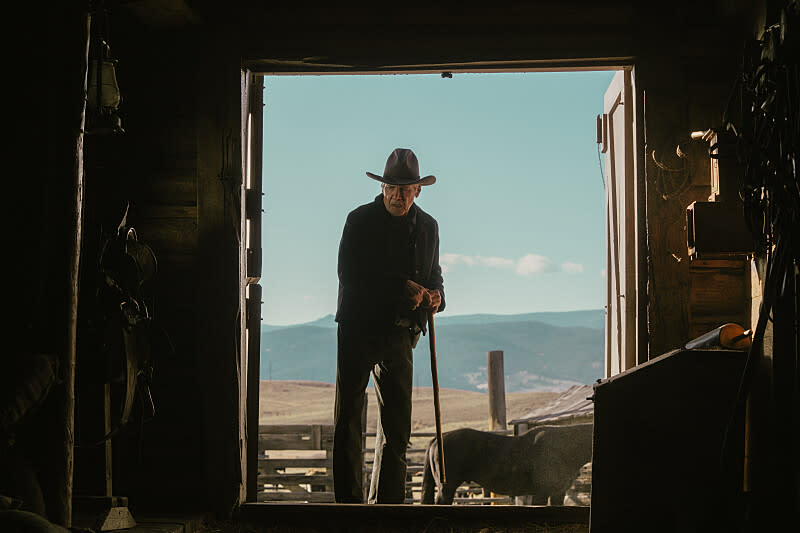
So how do the cinematographers achieve these effects with a production method that is supposedly counterproductive? It’s a combination of careful planning, lens choice, and embracing the advantages of the multi-camera approach while minimizing the drawbacks. According to Hodgson, who was a gaffer on “Yellowstone” before making the jump to director of photography on “1923,” it’s a methodology that has steadily evolved on Sheridan’s shows. “‘Yellowstone’ was a three-camera show,” he told IndieWire. “As the show grew and became more complex, we would run every camera we had available to us.”
McLachlan, who shot episodes five and six of “1923,” had prior experience shooting with five cameras — and occasionally more — on HBO’s “Game of Thrones.” “For the huge battle scene in Episode 704, we had five full-time plus some specialty cameras like an Osmo in the hand of a horseman and some drone work,” McLachlan told IndieWire. “Obviously with scenes of that scale, you want to get maximum coverage per take because there is just so much going on and multiple takes add to the risk of someone getting hurt. When the dragon first lights up the ranks of soldiers, we set 20 people on fire simultaneously — a Guinness world record — so there would be only one take and it had to be able to be used in numerous places in the sequence. I think there were seven cameras set up for that and the other huge stunts involving real fire and explosions.”
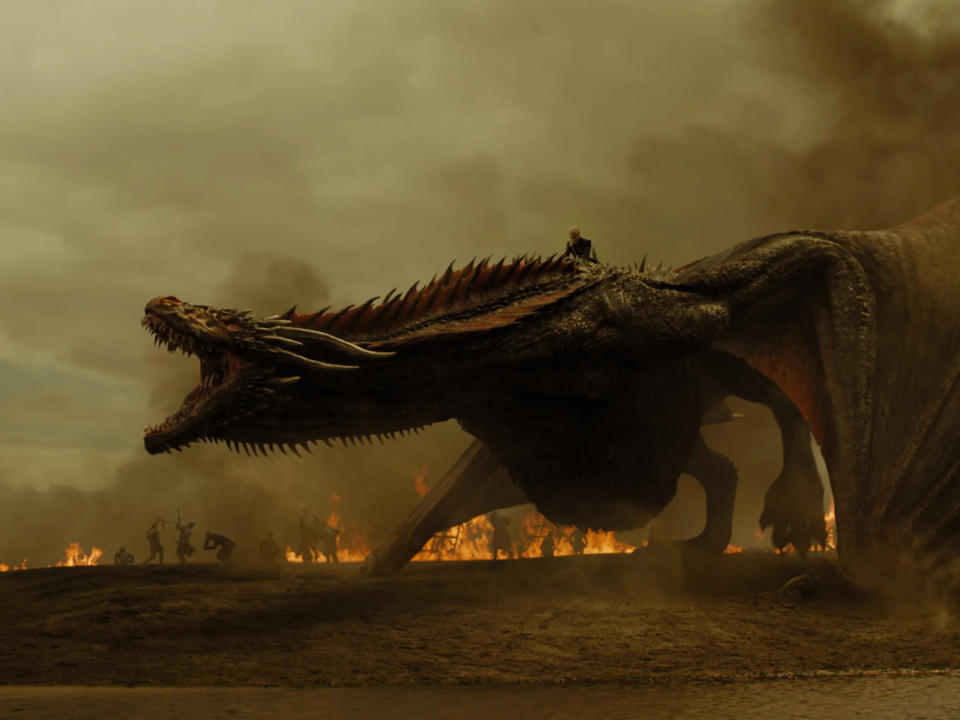
One big difference between the aesthetic of “Game of Thrones” and that of “1923” is the former show’s emphasis on wider lenses, which often precluded too many cameras because they would start showing up in the shot. The tendency toward longer lenses on “1923” made McLachlan’s job just a little bit easier. “Taylor loves super long telephotos as much as possible, and that means in wide open spaces you can get them all working and stay out of each other’s shots,” McLachlan said. “Even indoors in larger sets, you can get very cinematic material.”
McLachlan noted that a lot of TV directors would probably like to work the way that Sheridan does but don’t have his clout to get the extra cameras. “The great David Nutter, who I did some big ‘Game of Thrones’ episodes with, covers a lot with two or three cameras but had the time to plan very meticulously in advance. There was never a lot of time to shoot but there was enough time to plan well, so we got the kind of coverage they get on Taylor’s shows but it took more setups and more time on set.”
Time is a precious commodity on Sheridan’s shows, which have grown increasingly ambitious since “Yellowstone” began. “When you’ve got a thousand head of cattle and 10 horses and the whole gamut, you don’t really have time to reset everybody,” Hodgson said. “So there’s a lot of strategic positioning that allows us to capture scenes more naturally, in a kind of documentary style.” Hodgson notes that it’s not just the wide-open spaces that get the multi-cam treatment. “It can be in a bedroom or a kitchen, because we want to deliver a space for the actors to work in without interrupting their flow.”
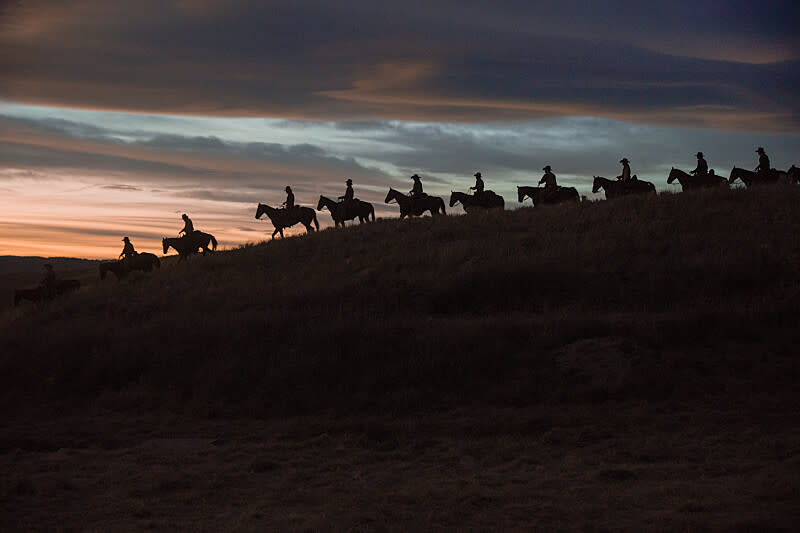
Creating the best conditions for the actors is a key advantage of the multi-cam approach, according to McLachlan. “It’s no surprise that Taylor Sheridan — also an actor — likes to work this way,” he said. “I think not grinding the actors down with set-up after set-up and take after take has a great effect on morale and performances and gets the day done quicker and with less overtime. And if you’re outdoors with limited daylight it just makes sense.” On “1923,” the mandate was to shoot as many of the exteriors as possible with backlight at the most optimal times of day, a rule that led to the show’s luminous images but that meant the crews were under severe time constraints — another reason it was important to get as much coverage as quickly as possible.
“Lighting can take a back seat somewhat in those instances,” McLachlan. “On the one hand that frustrates me because sculpting light is what gives me the most satisfaction on set, but on the other hand you need to remember what you’re there for, which is to make a really good engaging show with good performances and do it fast. Your aesthetic needs have to take a backseat sometimes — three perfect shots aren’t much use if the scene needs nine to be great.”
That said, McLachlan felt that at many times he was able to get great shots from all of his cameras with careful blocking in collaboration with the directors. “Laying the scene out and taking the best advantage of what you have to work with from a lighting source perspective is the first step. And it works best in big wide open spaces, but I had a great sequence in a mansion between Timothy Dalton and Jerome Flynn where the only light came from the windows and we blocked it accordingly. Inside that house, I could only get three cameras in the tight spaces but had the other two pre-set to get interstitial shots in the hallway and adjacent room. It meant lighting the whole location as much as possible but it still saved a lot of time, and I don’t feel like I compromised my lighting at all in that house — or any of the other interiors for that matter.”
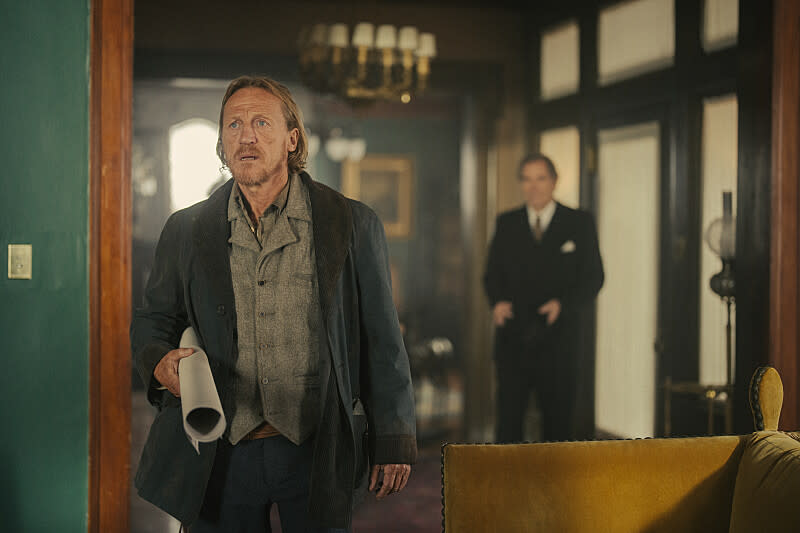
Another obvious advantage of the multi-camera approach is the options it provides the filmmakers in editing. “Having lots of coverage helps enormously in the cutting room in sculpting or remolding a scene and cutting around anomalies and mismatches that there was not time to rectify on set,” McLachlan said. “Plus, an astute fifth camera operator who has storytelling instincts will sometimes grab you a bit of gold now and then that the principal cameras would never have seen.” Hodgson concurs: “I’ve found that with multiple cameras you might make sacrifices, but those sacrifices might lead you to fresh ideas in their place that you might not have discovered otherwise.”
Hodgson added that at the end of the day, the show is not about the photography but about the characters; the multiple cameras actually allow him to focus on what’s essential. “The idea is not to let the camera or lighting take away from what’s on screen,” he said. “When you have the kind of cast we have and the incredible production design, you just have to sit back and figure out how to deliver the picture as minimally and elegantly as possible.”
Since both Hodgson and McLachlan acknowledge that shooting with multiple cameras often creates challenges that would be alleviated by single-camera shooting, the question arises: Do they ever wish they could shoot “1923” differently? “Given a chance would I make a whole movie with just one camera again? Maybe…but I think I’d feel frustrated by that,” McLachlan said. “That’s the great thing about this job — something new or different all the time. And the older I get, the faster I like to work. So I loved my time on ‘1923.’”
Best of IndieWire
Where to Watch This Week's New Movies, from 'Mission: Impossible' to 'Theater Camp'
The Best Thrillers Streaming on Netflix, from 'Nocturnal Animals' to 'Emily the Criminal'
Tom Cruise's 20 Best Performances, from 'Top Gun' to 'Mission: Impossible' to 'Magnolia'
Sign up for Indiewire's Newsletter. For the latest news, follow us on Facebook, Twitter, and Instagram.

